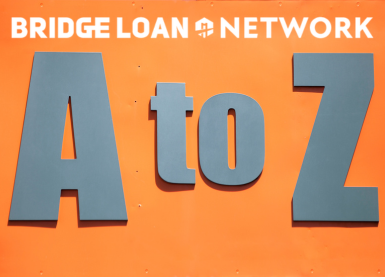Loan Management Systems (LMS) and Loan Origination Systems (LOS) help to provide a streamlined and automated lending process. These systems are an essential tool to improve efficiency, reduce costs, and ensure compliance. In this post, we will provide an A-to-Z list of the features and functionalities of our LMS and LOS.
AUTOMATION
Don’t be stuck in the manual process anymore. Bridge Loan Network’s Loan Management System and Loan Origination System allow brokers and lenders to ditch tedious processes and automate their company.
BORROWERS
Borrowers will be able to upload their own documents that are requested from them. A unique link will be provided to them, and they can use that link to access their documents. They can also upload documentation of their own and complete signatures to help with the progress of the deal.
CLOUD-BASED
The Bridge Loan Network software is fully cloud-based, meaning you don’t have to download any extra applications to your computer, and can access your portal anywhere you have an internet connection.
DOCUMENT MANAGEMENT
Easily manage all the documents pertaining to your loans and deal scenarios. Keep track of deadlines, document expiration dates, and more directly through the software.
EFFICENT
Take your outdated manual process and automate it, turning it into an efficient workflow! No more jumping back and forth between folders and files. Every document you need will be available in one place with the simple click of a button.
FLEXIBILITY
Because the Bridge Loan Network software is cloud-based, all you need to access it is an internet connection. Access to software is flexible, and you only need the link and your login. It is also important to keep security in mind, so remember to only use secure and trusted internet connections.
GROWTH
Software solutions help your team to easily grow. Additional team members can be added on to your portal, and you still pay the same price. No matter how much your team may grow, your costs for the portal will remain the same.
HISTORY
Easily keep track of your borrower’s history with you, and their pertinent information needed for loan files. Know what deals they’ve been a part of in the past, what kind of deals they are generally interested in, and have their information on file for future loan files.
INTUITIVE
Bridge Loan Network’s software has an intuitive and familiar feel to it, allowing you to jump right into the software and get your business rolling. The team is always available for every step in the process if you ever need help.
JOINT APPLICATIONS
If more than one person is applying for the loan, our software can handle that. Easily add borrower and co-borrower information into the contact section in the portal.
KEY LENDING METRICS
See metrics such as loan-to-value ratios (LTV), credit scores, and more important lending metrics directly within the software. This can help you make important business decisions about the deals your company is working on. Know if it’s the right deal for you, or maybe you need to pass on this one and move on to other deals.
LOAN PROGRESS TOOLBAR
Never lose track of what stage your deals are at again. Easily see when deadlines are coming up, and the progress of your loan scenario with our loan progress toolbar, which can be customizable to your lending milestones.
MILESTONE EMAILS
Receive automated emails when major loan milestones are completed, as well as milestone being logged into the message board within the loan with time stamps.
NEW EMPLOYEE ONBOARDING
Incorporating the software into the new employee’s onboarding process can help ensure a smooth transition for your lending team. Set-up of their portal can be done in advance, allowing the new team member to log in on their first day and begin acquainting themselves with the software they will utilize daily.
ONE CLICK CREDIT/BACKGROUND CHECKS
Background and credit checks are as easy as one-click and can be done directly within the software! There will be no need for a separate program or software for credit and background checks when utilizing Bridge Loan Network’s software.
PARTNERSHIPS
We are proud to offer several partnerships to help make your life easier when it comes to closing deals successfully. We can offer assistance and resources with everything from appraisals, background reporting, and referrals.
QUICK LOAN PROCESSING
With Bridge Loan Network, you and your team can process your deals from application to closing, all in one convenient place. Including requesting all required documentation, reports, and client information.
REFERRAL PORTAL (Private Lender Link)
With Bridge Loan Network’s software, you have access to Private Lender Link’s Referral Portal. Receive feedback and lender recommendations for deal scenarios.
SECURE PAYMENT COLLECTION
Easily collect any fees and payments directly through the software with secure payment portals. No more jumping back and forth between manual documents and payment processing.
THIRD PARTY INTEGRATIONS
The Bridge Loan Network software offers open API capabilities, allowing for more integration of external systems, and helping control the flow of important information.
UNLIMITED DOCUMENT COLLECTION
There is no limit to how many documents can be saved to the Bridge Loan Network software. All the documents and information for all your loan scenarios and deals can be stored in one easy to access place and can be exported to your local drive when needed.
VIRTUAL CUSTOMER SUPPORT AND TRAINING
All the necessary training that you need to get up and running with the software is conducted virtually. If there are any questions that come up after the training, the support team is just a click away. Or you can reach out to the representative you had your demo or training with.
WHITE LABELED
Everything from the application to your portal can be branded to your company, including adding in your logo. Your brand identity remains consistent, and your clients won’t be confused about who they are working with!
X-PORTING CAPABILITIES
If you ever need (or want) to work outside of the software, you can export any of the documents or specific loan files to your computer. Exporting capabilities enable lenders to generate reports, share loan data, analyze loan data to identify trends, and make data driven decisions.
YES, IT IS SIMPLE
The Bridge Loan Network software is the easiest and simplest software you will use for your business! With virtual training, you’ll be able to jump right in and put in work that matters instead of wasting time in complicated systems.
ZERO TIME WASTED
Spend less time clicking around between files and deals and spend more time being productive while working on your deals! Less time on finding files means you aren’t wasting time that you could be using to make more money.
For more information about our Loan Management System and Loan Origination System, check out our website and request a demo today!
Don’t miss out on deals because of messy processes.
















